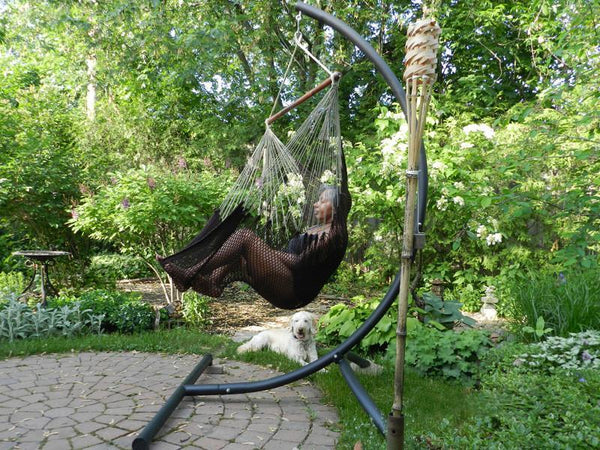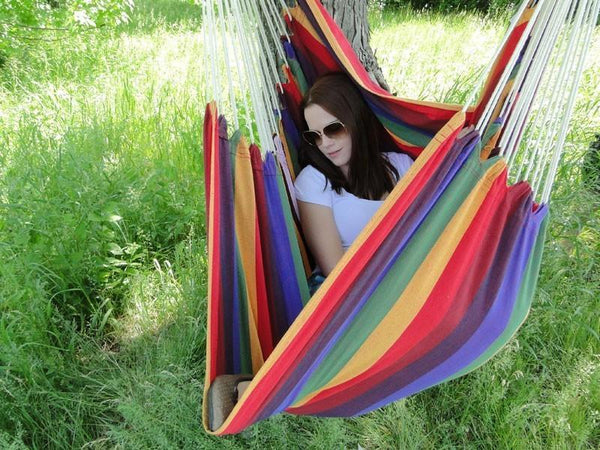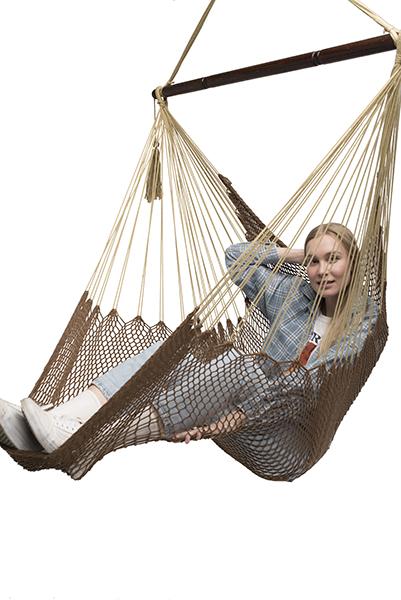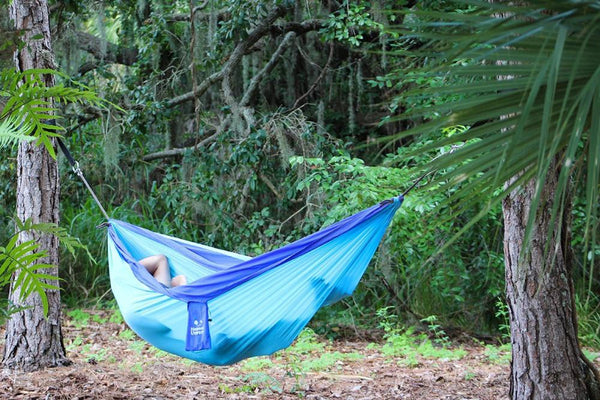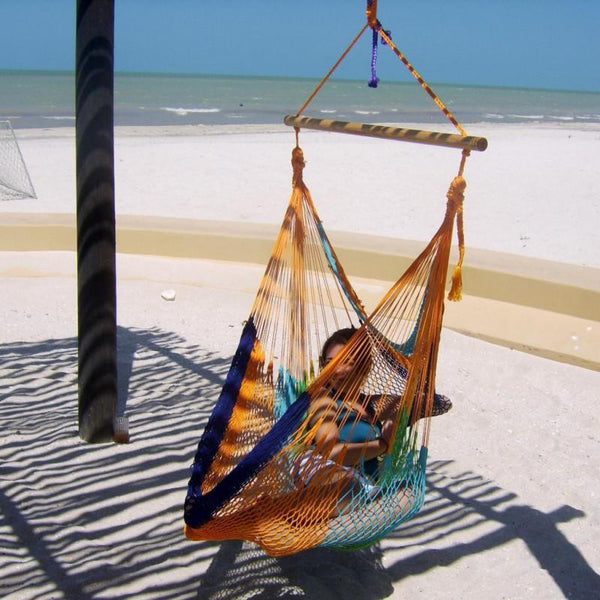FREE SHIPPING on most orders $25+ HAMMOCK BUYING GUIDE
Menu
-
-
Hammocks
-
Hammock Stands
-
Hammocks with Stands
-
Hanging Hammock Chairs
- View all Hammock Chairs
- Brazilian Style Hammock Chairs
- Colombian Hammock Chairs
- Mayan Hammock Chairs
- Mayan Hammock Chairs Deluxe
- Universal Hammock Chair Stand
- U Hammock Chair Stand
- Brazilian Hammock Chair with Universal Chair Stand
- Colombian Hammock Chair with Universal Chair Stand
- Mayan Hammock Chair with Universal Chair Stand
- Mayan Hammock Chair Deluxe with Universal Stand
-
Accessories
- Gift Cards
- Tools and Guides
- Bargain Bin
-
- 1-800-207-4761
- Login

FREE SHIPPING on most orders $25+ HAMMOCK BUYING GUIDE
The Ultimate Guide to Birdwatching
February 23, 2024 10 min read
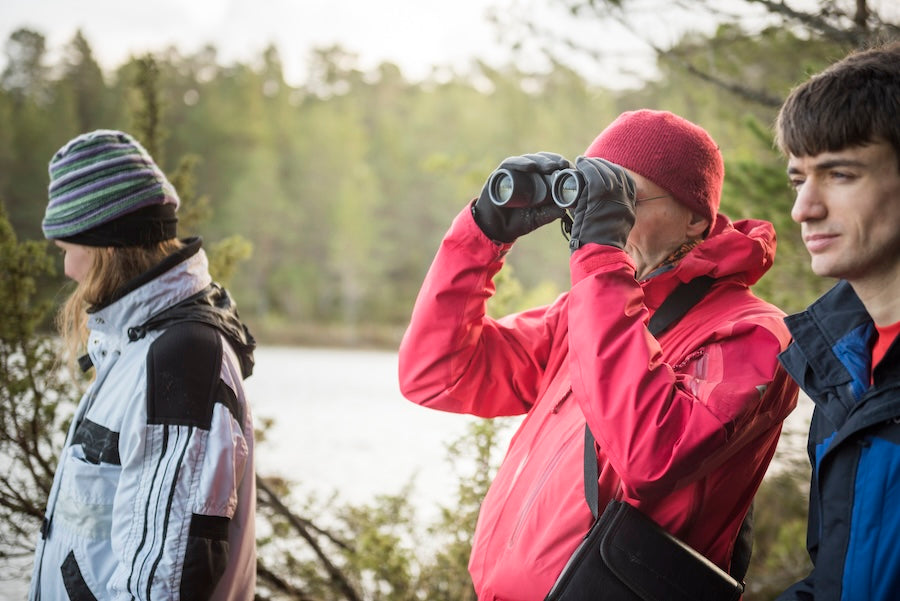
Audio Version
Welcome to the enchanting world of birdwatching - a hobby that allows you to connect with the wonders of nature while providing a tranquil escape from the daily hustle and bustle! Imagine a serene morning in the heart of Canada, surrounded by the crisp, fresh air of a winter landscape. As you step outdoors, you're greeted by the soft rustling of leaves and the melodious chirping of birds hidden among the trees.
Birdwatching is your gateway to this enchanting experience, offering the opportunity to discover the rich tapestry of avian life that calls Canadian landscapes home.
For many, the appeal of birdwatching lies in its accessibility. Unlike some outdoor activities that require specialized skills or equipment, it welcomes enthusiasts of all ages and backgrounds.
Whether you're a seasoned naturalist or someone simply seeking moments of serenity in nature, birdwatching provides a common ground where you can immerse yourself in the beauty of the natural world.
One of the most remarkable aspects of birdwatching in Canada is the year-round opportunity it offers. Even during the winter months, when landscapes are blanketed in snow and frost, Canadian birds continue to thrive.
In fact, the winter season introduces its unique charm to birdwatching, as certain species become more visible, and the absence of foliage makes for easier observations.
So, grab your binoculars and prepare to embark on a journey of discovery as we explore the world of birdwatching in the Great White North.
Understanding Bird Species in Canada
Canada's vast and diverse landscape is a haven for a wide array of bird species.
From the rugged shores of the Atlantic provinces to the majestic mountains of the west, this country boasts an impressive avian population that includes both year-round residents and migratory visitors. The beauty of birdwatching in Canada lies in its geographical diversity, which brings forth a rich tapestry of winged wonders.
As you delve into the world of birdwatching, you'll encounter an intriguing cast of characters. The majestic bald eagle soars in western skies, while the iconic common loon graces northern lakes with its haunting calls. In the winter, certain species become even more prominent, offering birdwatchers a unique opportunity to spot winter residents and migratory birds that have chosen Canada as their temporary abode.
Migratory patterns play a significant role in birdwatching in Canada. The changing seasons prompt many birds to embark on incredible journeys, flying thousands of kilometres to reach their breeding or wintering grounds.
Understanding these migration patterns allows birdwatchers to anticipate the arrival of different species at specific times of the year, turning regions into birdwatching hotspots. Whether you're drawn to the vibrant colours of songbirds or the stealthy grace of raptors, Canada's birdlife offers a captivating glimpse into the world of ornithology.
So, let's dive into this fascinating world of birds and learn how to observe and appreciate the feathered wonders that grace our Canadian landscapes, even in the depths of winter.
Essential Gear for Birdwatching
Now that you're ready to embark on your adventure, it's essential to have the right gear at your disposal. Birdwatching is a delightful pastime that requires minimal equipment, but the items you choose can significantly enhance your experience.
Here's a rundown of the essential gear to ensure you're well-prepared for your birdwatching outings.
Binoculars
A good pair of binoculars is the birdwatcher's most valuable tool. They allow you to get a closer look at distant birds and observe their intricate details. When selecting binoculars, consider factors like magnification (e.g., 8x42), field of view, and waterproofing. Look for models that provide a comfortable grip and are suitable for extended use.
2. Field Guides or Birding Apps
Identifying birds can be challenging, especially for beginners. A field guidebook specific to your region or a birding app on your smartphone can be invaluable. These resources provide illustrations, descriptions, and habitat information for various bird species, helping you identify the birds you encounter.
3. Notebook and Pen
Keeping a birdwatching journal is a delightful way to record your sightings, observations, and memorable moments. Note the date, location, weather conditions, and any unique behaviours you witness. Over time, your journal becomes a cherished record.
4. Outdoor Attire
Dressing appropriately for your birdwatching excursions is crucial, particularly during Canadian winters. Layering is key to staying warm while allowing you to adjust your clothing as needed. Invest in a good-quality waterproof jacket, warm gloves, a hat, and waterproof boots.
Don't forget to wear earth-toned or camouflaged clothing to blend into the surroundings and avoid startling the birds.
5. Backpack
A comfortable and spacious backpack is essential for carrying your gear, field guides, water, snacks, and other essentials. Look for one with adjustable straps and compartments to keep your items organized and easily accessible.
6. Birdwatching Hammock
While not an absolute necessity, a hammock can significantly enhance your birdwatching experience. Its portability allows you to set up in various environments, providing a comfortable vantage point to observe avian activities.
A hammock can be a cosy retreat during breaks, offering you a serene spot to relax while enjoying the sights and sounds of nature.
The Role of Hammocks in Birdwatching
Picture this: you've been quietly observing a group of songbirds flitting about in the trees. Your binoculars have allowed you to marvel at their vibrant plumage and delicate features. However, after a while, your back begins to ache from standing or sitting on uneven terrain. This is where a hammock comes into play.
Hammocks provide a comfortable and ergonomic way to observe birds. With the right hammock setup, you can gently sway in the breeze, offering you a stable and vibration-free platform for your binoculars or camera. The suspended position allows you to minimize movement, reducing the risk of scaring away the birds. Plus, it's incredibly relaxing.
The portability of hammocks means you can take them to various birdwatching spots. Whether you're in a forest, a wetland, or your backyard, a hammock can be set up in minutes, providing you with a cosy vantage point. It's a simple yet effective way to immerse yourself in the natural world and experience birdwatching with unparalleled comfort.
So, as you embark on your birdwatching adventures armed with your binoculars and field guides, consider adding a hammock to your gear list. It's not just a comfortable resting spot; it's a gateway to a deeper connection with nature, allowing you to observe the feathered wonders of Canada in a relaxed and inviting manner.
Tips for Spotting and Identifying Birds
Now that you're equipped with the essential gear and a comfortable hammock for your birdwatching adventure, it's time to dive into the art of spotting and identifying birds.
While birdwatching is a delightful hobby, it can also be a bit challenging, especially for beginners. However, with some practice and a keen eye, you'll soon become a skilled birdwatcher.
1. Look for Movement
One of the easiest ways to spot birds is to watch for movement. Birds are active creatures, and their movements can catch your eye even from a distance. Pay attention to any sudden flutters, hops, or flights. Often, you'll notice movement before you see the bird itself.
2. Listen for Bird Calls
Birdwatching is not just about visuals; it's also about listening. Birds communicate through calls and songs, and learning to identify these vocalizations is a valuable skill. Invest in a birding field guide or app that includes audio recordings of bird calls. You'll be amazed at how much you can learn by simply listening.
3. Observe Feeding Areas
Birds are often most active when they're feeding. Look for areas where birds gather to find food, such as bird feeders, fruit trees, or bodies of water. Patiently wait nearby and watch as various bird species visit these locations.
4. Be Patient and Silent
Patience is a virtue in birdwatching. Birds can be skittish, and sudden movements or loud noises can scare them away. Find a comfortable spot in your hammock, stay still, and avoid talking loudly. The longer you sit quietly, the more likely birds are to return to their natural behaviours.
5. Use Your Binoculars
Binoculars are your best friend when it comes to birdwatching. They allow you to get a closer look at birds without disturbing them. When using binoculars, keep both eyes open and practice focusing quickly. This way, you can maintain your peripheral vision while observing your target bird.
6. Note Field Marks
Field marks are unique characteristics that can help you identify bird species. These include plumage colouration, size, shape, and distinctive markings. A good field guide will provide detailed descriptions of these features. Take notes in your journal to help with identification later.
7. Watch for Flight Patterns
The way a bird flies can also be a clue to its identity. Some species have distinctive flight patterns, such as hovering like a kestrel or gliding like a hawk. Pay attention to these behaviours, as they can provide important clues.
8. Consider the Season
Bird species vary with the seasons, and migration patterns play a significant role in the birdwatching calendar. Some birds are only present during specific times of the year.
Keep track of seasonal changes in your birdwatching journal to anticipate which species you're likely to encounter.
Remember that birdwatching is a skill that improves with practice. Don't be discouraged if you can't identify every bird you see right away. Over time, your knowledge will grow, and you'll find joy in the process of observing these beautiful creatures in their natural habitats.
Best Practices for Ethical Birdwatching
As you embark on your birdwatching journeys, it's essential to adopt ethical practices that ensure the well-being of both birds and their habitats. Ethical birdwatching not only benefits the environment but also enhances your birdwatching experience by allowing you to observe birds in their natural behaviours.
Here are some best practices to follow:
1. Keep a Respectful Distance
When observing birds, maintain a respectful distance to avoid causing stress or disturbance. Use your binoculars and the zoom feature on your camera to get closer views without intruding on their space. If a bird appears agitated or alarmed by your presence, back away slowly.
2. Do Not Feed Wild Birds
Feeding wild birds might seem like a kind gesture, but it can have negative consequences. It can disrupt their natural feeding patterns and lead to overcrowding, increased competition, and the spread of diseases. Instead of feeding wild birds, focus on providing suitable natural habitats for them to find food.
3. Avoid Flash Photography
The use of flash photography can startle birds and disrupt their activities. In low-light conditions, use high ISO settings and slower shutter speeds to capture photos without the need for a flash. When photographing birds, prioritize their well-being over getting the perfect shot.
4. Respect Nesting Birds
Nesting birds are particularly vulnerable. If you come across a nest, maintain a significant distance and avoid any disturbance. Never touch or handle nests, eggs, or young birds. Watch nesting sites from a distance, and if you suspect a disturbance, consult local experts or authorities.
5. Practice 'Leave No Trace'
Whether you're birdwatching in a park, forest, or any natural area, follow the Leave No Trace principles. Carry out all your trash, respect trail closures, and stay on designated paths. Leave the environment as you found it to preserve it for future generations of birds and birdwatchers.
Birdwatching Hotspots in Canada
Canada is a vast and diverse country, and it's home to a wide range of bird species throughout the year. Whether you're a seasoned birder or just starting out, there are plenty of birdwatching hotspots to explore.
Here, we'll highlight some of the best locations across Canada, each offering a unique birdwatching experience.
1. Point Pelee National Park, Ontario
Located in southern Ontario, Point Pelee is a birdwatcher's paradise, especially during the spring and fall migrations. It's a crucial stopover point for many migratory birds, making it a must-visit destination. You can spot warblers, vireos, and raptors as they make their way across Lake Erie.
2. Algonquin Provincial Park, Ontario
Known for its stunning landscapes and diverse wildlife, Algonquin Park is also a fantastic place for birdwatching. The boreal forests are home to a variety of species, including Common Loons, Bald Eagles, and Spruce Grouse. Birdwatching from a hammock along the tranquil lakeshores is an experience like no other.
3. Prince Edward Island National Park, Prince Edward Island
This island province offers a unique birdwatching experience with its coastal habitats and shorebirds. You can spot Piping Plovers, Black-crowned Night-Herons, and a variety of gulls. The island's beautiful beaches make it an excellent spot for birdwatching while lounging in a hammock.
4. Cape May, Newfoundland and Labrador
Cape May is famous for its seabird colonies and dramatic cliffs. It's a prime location for observing Atlantic Puffins, Razorbills, and Northern Gannets. The rugged coastline provides numerous opportunities to set up your hammock and enjoy the seabird spectacle.
5. Churchill, Manitoba
If you're a fan of raptors and waterfowl, Churchill is the place to be. It's known as the "Polar Bear Capital of the World," but it's also a fantastic birdwatching destination. During the summer months, you can see species like Snowy Owls, Tundra Swans, and Arctic Terns.
6. Gulf Islands, British Columbia
Head to the beautiful Gulf Islands in British Columbia for a chance to see a variety of coastal and migratory birds. Keep an eye out for Bald Eagles, Black Oystercatchers, and numerous songbirds. Setting up your hammock on one of the picturesque islands is an ideal way to relax and birdwatch.
7. Grasslands National Park, Saskatchewan
If you're interested in prairie birds and wide-open spaces, Grasslands National Park is a hidden gem. Here, you can spot Burrowing Owls, Sage Grouse, and Ferruginous Hawks. The vast prairies provide an excellent backdrop for birdwatching while unwinding in your hammock.
8. Fundy National Park, New Brunswick
Known for its dramatic tides, Fundy National Park is also a birdwatcher's delight. Coastal habitats attract shorebirds like Sandpipers and Plovers, while the inland forests host a variety of songbirds. Set up your hammock along the Bay of Fundy and enjoy the sights and sounds of the avian world.
The Joy of Birdwatching
Birdwatching is a truly rewarding and accessible hobby that allows you to connect with nature profoundly. Whether you're a beginner or a seasoned birder, there's always something new to discover and observe in the world of birds. The diversity of species and the beauty of their behaviours make birdwatching a captivating pastime.
As you venture into the world of watching birds (or any wildlife), remember to equip yourself with the essential gear, practice good ethics, and explore the stunning birdwatching hotspots across Canada.
And why not take your birdwatching experience to the next level by enjoying it from the comfort of a hammock? A hammock provides not only a comfortable vantage point but also a peaceful escape from the hustle and bustle of daily life.
So, grab your binoculars, field guide, and hammock, and head out to discover the fascinating avian world around you. Birdwatching is not just a hobby; it's a journey of connecting with the natural world and finding joy in the simple pleasures of observing birds in their habitats.
Safety First!
When using a hammock*, safety is paramount. Please make sure to follow these important guidelines when purchasing, installing and using a hammock
*(includes Hammock, Hammock Chair, Hammock Stand and Hammock Accessories)
Safety First!
When using a hammock*, safety is paramount. Please make sure to follow these important guidelines when purchasing, installing and using a hammock
*(includes Hammock, Hammock Chair, Hammock Stand and Hammock Accessories)
Related Products
Want to relax?
Join for exclusive content and promotions we only give to our email list!

